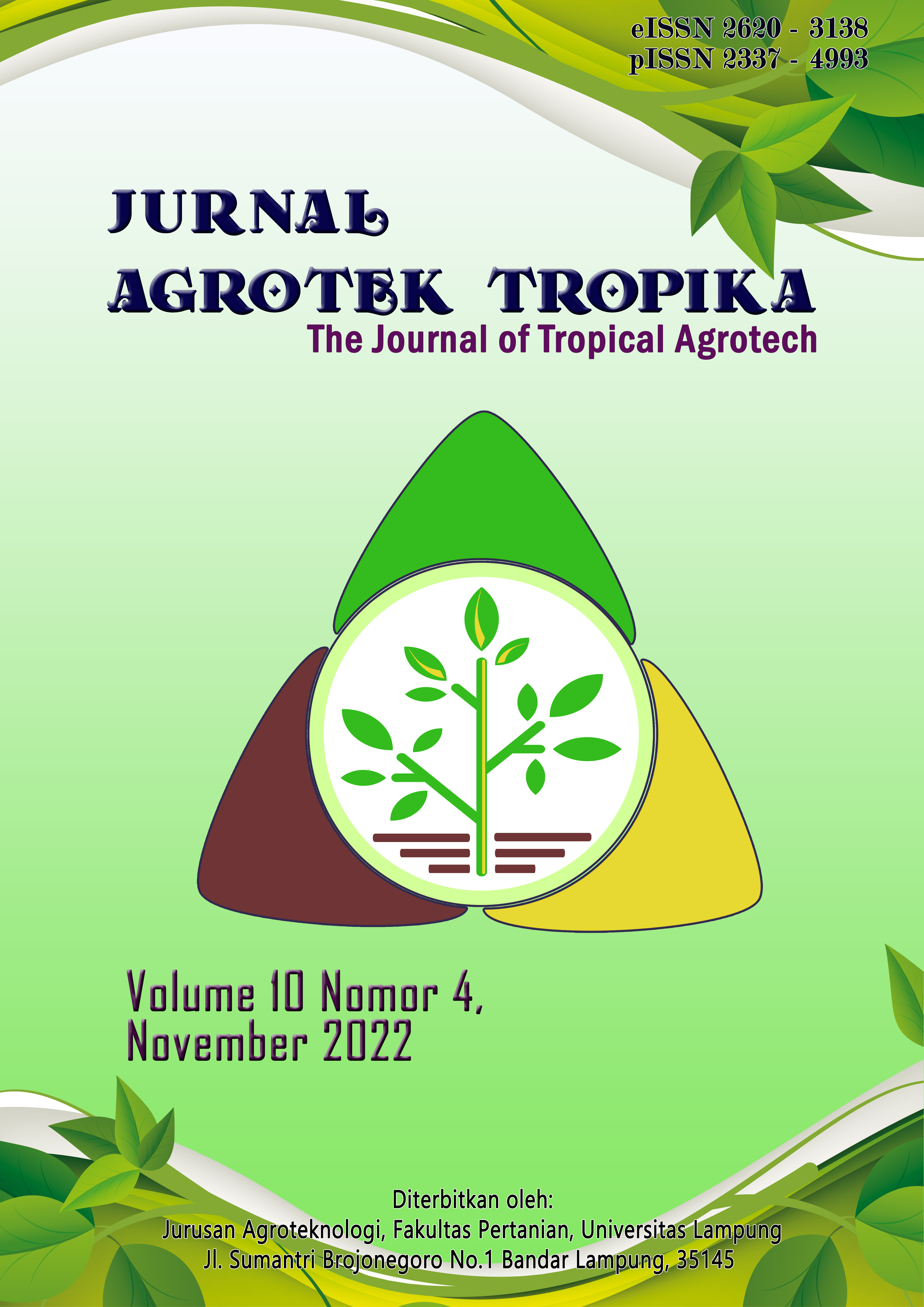TANGGAP TANAMAN INDUK LADA (Piper nigrum L.) TERHADAP APLIKASI KOMPOSISI DAN FREKUENSI PENYEMPROTAN PUPUK DAUN
DOI:
https://doi.org/10.23960/jat.v10i4.5861 Abstract View: 460
Abstract View: 460
Keywords:
composition of foliar fertilizer, frequency of spraying, pepper parent plantsAbstract
Pepper (Piper nigrum L.) is one of the estate crops with high economic value and a foreign exchange earner for Indonesia, but its productivity is still low. For this reason, nutrient management is essential to increase the productivity of pepper parent plants. This study aimed to obtain the best composition of foliar fertilizer for pepper parent plant growth, obtain the best spraying frequency of foliar fertilizer for pepper parent plant growth, and obtain the best combination of composition and spraying frequency of foliar fertilizer for pepper parent plant growth. The study was conducted from November 2020 to April 2021 using a Randomized Block Design (RBD) with a factorial pattern of 4 × 2. The first factor was the composition of foliar fertilizers with four levels of treatment, namely control (D0), NPK foliar fertilizers 11:8:6 (D1), NPK foliar fertilizer 20:15:15 (D2), and NPK foliar fertilizer 32:10:10 (D3). The second factor is spraying frequency of foliar fertilizer with two levels of treatment, namely every two weeks (F1) and every four weeks (F2). Each treatment was repeated three times and each experimental unit consisted of two parent plants. Observational data was analyze using analysis of variance and continued with the honestly significant difference test (HSD) at the 5% level. The results showed that the composition of NPK foliar fertilizer 20:15:15 with the spraying frequency every two weeks gave a significant effect but did not give the best effect. Significant interactions were shown in the observation variables of number of leaf, number of internode, leaf greenness index, leaf area number three, and leaf dry weight number three.
Downloads
Downloads
Published
How to Cite
Issue
Section
License
Jurnal Agrotek Tropika (JAT) is licensed under a Creative Commons Attribution 4.0 International License.
The copyright holder is the author. Authors publishing under any license allowed by the journal retain the copyright and full publishing rights without restrictions.
The Creative Commons Attribution 4.0 International (CC BY 4.0) license allows users to copy, distribute, and adapt the work, even for commercial purposes, as long as proper attribution is given to the original creator. This is a highly flexible license that encourages widespread dissemination and use of creative works, supporting innovation and collaboration across various fields.











